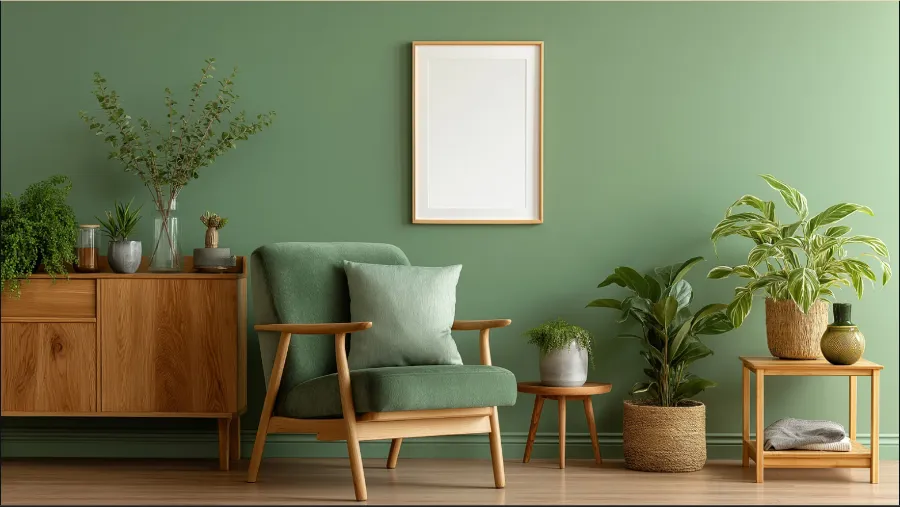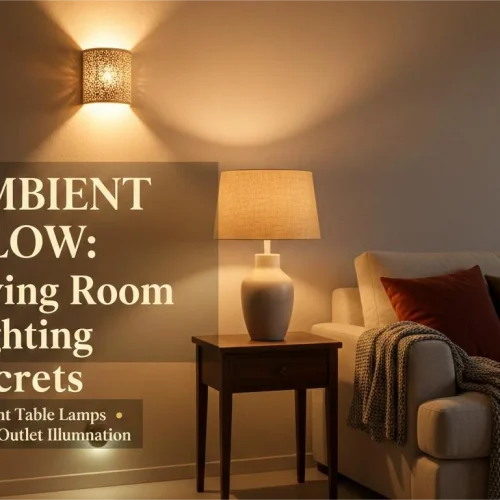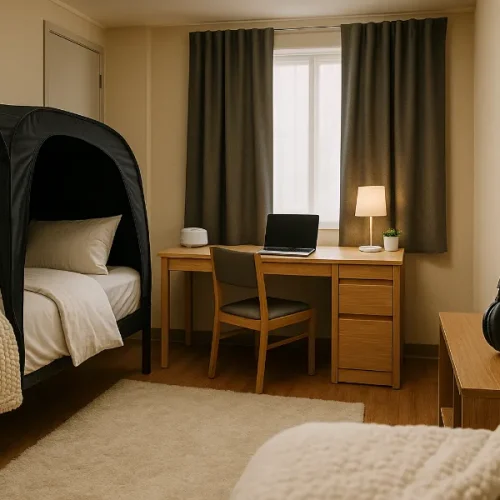
When a room feels flat despite having all the essentials, accent furniture can transform it. These carefully chosen pieces create striking visual moments without overhauling your budget or space. They fill awkward corners, enhance entryways, and add personality to your living areas, making your home instantly feel more cohesive and inviting.
The Transformative Power of Accent Furniture in Modern Living Spaces
Why do accent furniture pieces work so incredibly well? It comes down to how they function within spatial psychology and contemporary design thinking. There’s real science here. Poorly designed living spaces often lead to increased stress and anxiety and reduced quality of life.
Accent pieces have evolved way past “nice to have” territory, they’re genuine problem-solvers now. They anchor design choices, establish distinct zones, and fundamentally alter how you experience moving through your rooms. That strategically positioned accent chair? It’s not just seating. It actually changes how your brain interprets the entire space around it.
Beyond sustainability wins, accent pieces deliver remarkable bang-for-buck compared to full-scale renovations. We’re talking hundreds of dollars, not thousands, to completely refresh your aesthetic. For anyone looking to elevate home decor while keeping their bank account intact, this approach makes tremendous sense.
Accent Furniture Categories That Command Attention
Having established why accent pieces deliver such impressive returns, let’s examine which specific categories create the most dramatic transformations in real homes.
Surface-Level Sophistication with Console and Side Tables
Your entry console makes the first impression before you even say hello. It sets the entire tone. C-tables and nesting options work wonders in constrained spaces, appearing exactly when you need them and vanishing when you don’t. Those hunting for thoughtfully designed surfaces that function as both practical platforms and sculptural statements should explore furniture stores specializing in curated selections you simply won’t discover at big-box retailers.
Storage Solutions That Double as Design Features
Credenzas have migrated from dining rooms straight into contemporary living spaces, and for good reason. They handle media storage while looking infinitely more interesting than generic TV stands. Ladder shelving creates vertical drama without the visual weight of traditional bookcases. Apothecary-inspired cabinets bring eclectic personality plus genuinely useful storage to rooms needing both substance and style.
Strategic Placement Techniques for Maximum Visual Impact
Choosing excellent accent pieces represents only half the challenge, their placement determines whether they become design victories or costly missteps.
The Triangle Rule for Balanced Distribution
Human eyes instinctively search for triangular patterns. Position three accent elements at different heights throughout a room, and you’ve created an automatic visual rhythm. Perhaps a floor lamp here, a side table there, a floating shelf on that wall. The triangle doesn’t need to announce itself, it just needs to exist subconsciously. This straightforward approach makes professional-level interior design ideas accessible to absolutely anyone.
Layering with Architectural Features
Respect what’s already there. Got a fireplace? Your accent furniture should enhance it, not battle against it. Window treatments and accent selections should echo one another through color or material choices. Trying to fight your home’s natural focal points creates dissonance that no amount of styling will resolve.
Open-Concept Space Definition
Without walls doing the heavy lifting, accent furniture becomes your zone-creation tool. A bookshelf or console positioned behind your sofa separates living from dining areas without sacrificing light or conversation flow. Traffic patterns become crucial, you’re establishing invisible boundaries that intuitively guide movement throughout the space.
Color Theory and Finish Selection for Accent Furniture
Once placement strategies are understood, your next critical choice involves color, material, and finish decisions that either harmonize with or intentionally disrupt your current palette.
2024-2025 Trending Color Palettes
Here’s what the data shows: a 1stDibs designer survey predicts “chocolate brown” as the top color for 2025, a preference that has almost doubled since 2023. Earthy terracotta and warm clay dominate current trends. Sage green brings botanical tranquility indoors. Jewel tones like emerald and sapphire make spectacular accent chair statements. And don’t overlook unexpected neutrals, greige and warm taupe work brilliantly as foundation elements.
Mixing Materials and Textures
Combining brass with matte black iron generates instant sophistication. Mixing wood tones adds genuine depth when done intentionally, three different wood finishes maximum, keeping it cohesive. Balance hard surfaces against soft upholstery to prevent spaces from feeling cold. Glass and acrylic pieces visually expand cramped quarters by allowing light to pass through them.
Room-by-Room Accent Furniture Applications
These material and color principles come alive when applied to specific spaces, each presenting unique functional requirements and design possibilities.
Living Room Elevations
Angling stylish home furniture, such as accent chairs, relative to your sofa, creates superior conversation dynamics compared to rigid, parallel arrangements. Side tables should coordinate with sofa height, approximately matching the arm height or slightly below works best. Media consoles, beyond standard TV stands, such as low-profile credenzas or floating shelf systems, instantly modernize your entire aesthetic.
Bedroom Sanctuary Creation
Nightstand alternatives, such as wall-mounted floating shelves, free up precious floor space in smaller bedrooms. A bench positioned at your bed’s foot offers both seating and a practical spot for tomorrow’s clothes. Decorating with accent pieces in bedrooms means prioritizing comfort alongside aesthetics. Soft textiles, warm lighting, and deeply personal touches matter exponentially more here than in public spaces.
Dining Space Enhancement
Sideboards transcend mere storage, they’re prime styling real estate. Bar cabinets signal that your dining area is entertainment-ready. Mixing one or two different accent chairs into your main dining set adds massive personality without demanding you replace the entire collection. Those couple of different chairs can completely transform the room’s vibe.
Common Accent Furniture Mistakes and How to Avoid Them
Despite thoughtful selections, certain predictable missteps can sabotage your accent furniture’s effectiveness and waste limited resources.
Overcrowding and Visual Clutter
Here’s an uncomfortable truth: more rarely means better. Can’t navigate through a room comfortably? You’ve overdone it. Maintain breathing space around each element, minimum 18 inches for walkways, ideally more. Edit without mercy. Try removing one piece and honestly assess whether the room actually improves. Sometimes it absolutely does.
Ignoring Functionality for Aesthetics
That stunning velvet ottoman looks incredible until your dog permanently claims it as theirs. Stay realistic about your actual lifestyle. Pets, children, and real daily life demand consideration. Maintenance factors in, can this fabric actually be cleaned? Will you realistically do it? Select pieces that serve your genuine life, not some aspirational magazine version.
Transforming Spaces One Piece at a Time
Complete home makeovers aren’t necessary to dramatically upgrade how your space functions and feels. Strategic accent furniture consistently delivers outsized impact for relatively modest investment. Start with one room. Choose one meaningful piece. Build gradually from there. Honor your actual lifestyle, not idealized magazine spreads. Quality pieces from specialized retailers, sustainably sourced vintage treasures, or even DIY projects all work beautifully, what matters most is intentionality. Your home should authentically tell your story, and accent furniture provides the expressive vocabulary to do exactly that.
Your Accent Furniture Questions Answered
Target approximately 20-30% of your total furniture spending for accent pieces. They’re supporting elements rather than starring roles, but they definitely shouldn’t be afterthoughts. Quality accent furniture creates a disproportionate impact relative to actual cost.
Three to five accent elements typically work well for average living rooms. This might include two accent chairs, one side table, and a console. Beyond that, risks overwhelm the space unless you’re working with unusually generous square footage.
Contrast generates interest, but maintains unifying threads, perhaps matching wood undertones or echoing existing colors. Perfect matching reads stiff and showroom-like. Aim for curated rather than matchy-matchy. Your space should feel collected thoughtfully over time, not purchased during a single weekend trip.













